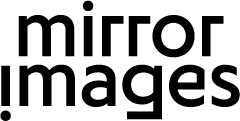Art
With the tools of her trade artist Sabina Grasso intuitively used photography as a remedy against the panic attacks which used to freeze her for hours. Once she spent half a day sitting on the stairs of a train station unable to move. As a means to overcome her crises she started taking self-portraits during seizures. Artistic practice is embedded in the reciprocal transition between subject/artist and object/public—artists “step outside of themselves” to judge their work critically, thereby performing a balancing act between an “insider” and an “outsider” points of view. As Baudelaire observed: ‘the artist is such only under condition of being a double and of not ignoring any of the phenomena of his double nature’. Seeing herself in that helpless state gave Sabina Grasso the self-awareness which urged her to gain control over her own image. Once that was achieved, she was naturally able to regulate her behaviour and overcome the attacks. Just as mirrors double our perception of self, so does art for the artist who produces it.
Artists recurrently transcend the limits of proprioception and are able to extend this experience of fluctuation to the public, so much so that it could be argued that it is inherent in the production of art itself to juggle this transition. André Salmon remarked that ‘artists confront the terrifying mirrors of their canvases’, apropos the demons that marred the Bohemian community of early 20th C Parisian artists. One of the main ideas behind art is to inscribe imagination and meaning into images, shapes and materials, words or sounds and return them to mundane reality and consequently to articulate imagination so that it reflects back onto physical reality to the point of influencing it. For metaphysical artist Giorgio De Chirico works of art, to be defined as such, must combine what we see with what we do not see, i.e. the significance of things. Indeed works of art evoke a semantic dimension “beyond” the object itself—typically a picture plane or the surface of a photograph and screen of a moving image are visualized as if through the metaphorical threshold of a looking-glass or window. Once the artist has enticed us to inhabit that mental space, we start projecting ourselves into it and relating to its characters.
Mirrors extend our sense of reality by enabling us to observe our own body so they are emblematic of a separation and reconciliation between subject and object, physical and virtual. The theory of mirror neurons postulates that we possess neurons that fire both when we act and also when we see that same action being performed by others. It explains why we are capable of emulating other people’s actions, which is an essential activity to the learning process, and why we empathize with members of our community, which helps preserve its cohesion. Thus, as if perspective were inverted, we, ourselves, become other people’s mirrors.
Photography and moving images—via the devices that paved the ground for their invention such as the camera obscura, camera lucida and magic lantern—are complex offspring of the mirror because they are able to record reflections, prolonging and repeating them in time. In particular, video technique, since its insurgence in the late 1960s as a lightweight device that reproduces images cheaply without the need for a film crew, spurred much activity in the exploration of self. All these tools have been used extensively by artists to make art and also by neuroscientists for experimentation.
Dan Graham and Vito Acconci, pioneers in deconstructing the phenomenology of viewing, started inverting the roles between audience and performer, objectivity and subjectivity, public and private since the late 1960s. As the sole actor in Undertone (1973) Vito Acconci engages the viewers from within the illusory dimension of the TV monitor as if there were continuity between real and virtual space: ‘I need you to screen out my lies, filter out the lies from the real point of view.’ Disturbing the placid voyeuristic experience of the viewing public, the artist creates discomfort by soliciting responses to his intimate monologue. In a series of installations that employ mirrors, CCTVs and time delay devices Dan Graham distorts the viewers’ perception of present time. If we face our own image returned to us eight seconds later we hardly acknowledge the time lapse because it is within the limits of our neurophysiological short-term memory, yet we experience inconsistent impressions. We identify our current behaviour with that of eight seconds previously and respond to it, getting caught up in a feedback loop: we are trapped in a state of observation as viewers experiencing ourselves as observed observers.
Mirrors multiply images by imitating the process of subdivision which is the universal basis of organic development. They ignite the imagination of writers and artists as if they were disquieting animated objects spying on peoples’ lives and they reproduce labyrinthine worlds, faithful enough to our physical reality to preserve its up and down attributes, but sinister to the point of inverting right and left (as in Hreinn Friðfinnsson’s photographs). Reflections, mirror images, doubles and twins; symmetry, coincidence, correspondence and tautology; inversion and joined opposites, circularity, synchronicity and palindromes; virtual reality and voyeurism; the infinite and eternity as repetition of the same, are qualities that belong to mirrors which are addressed by the exhibits on display.
